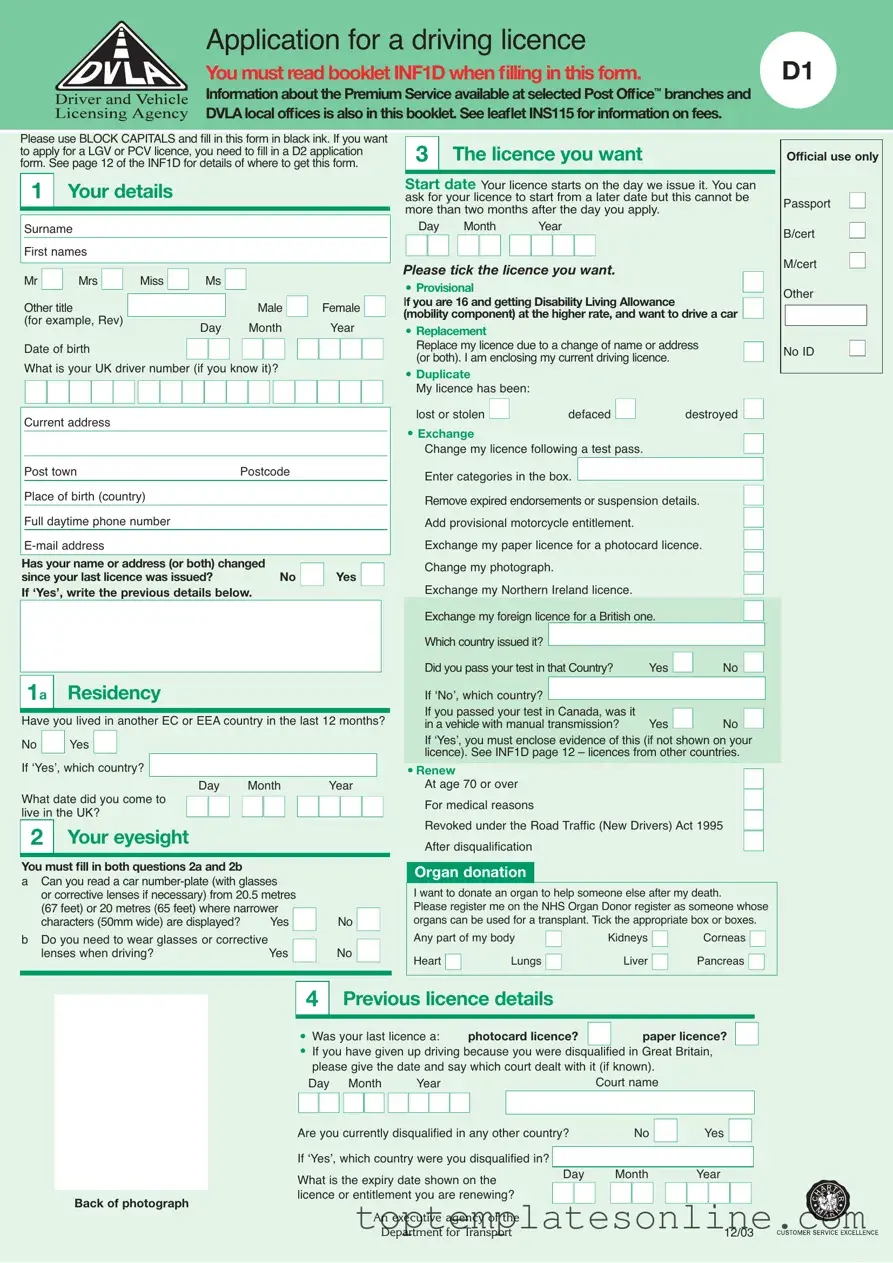The D1 DVLA form is an essential document for anyone looking to apply for a driving licence in the UK. This form allows individuals to request various types of licences, including provisional and full driving licences, as well as replacements for lost or stolen licences. When filling out the D1 form, applicants must provide personal details such as their name, address, date of birth, and contact information. Additionally, the form requires information regarding the applicant's residency history, eyesight, and health conditions that may affect their ability to drive. It's crucial to follow the instructions in the accompanying booklet, INF1D, which outlines the application process, including the necessary fees and documentation. Applicants must also confirm their identity by providing specific documents, and if applicable, have someone sign the back of their photograph. By ensuring all sections are completed accurately, individuals can help facilitate a smooth application process and avoid delays.
